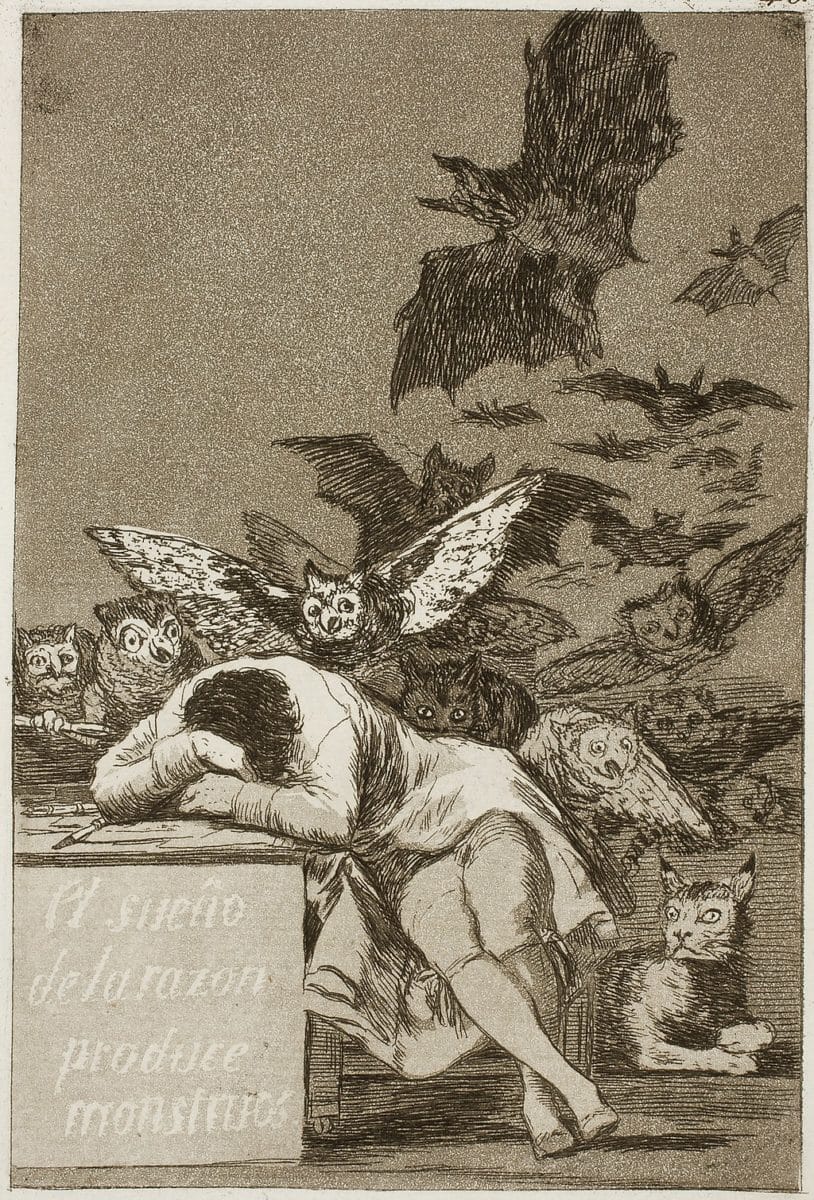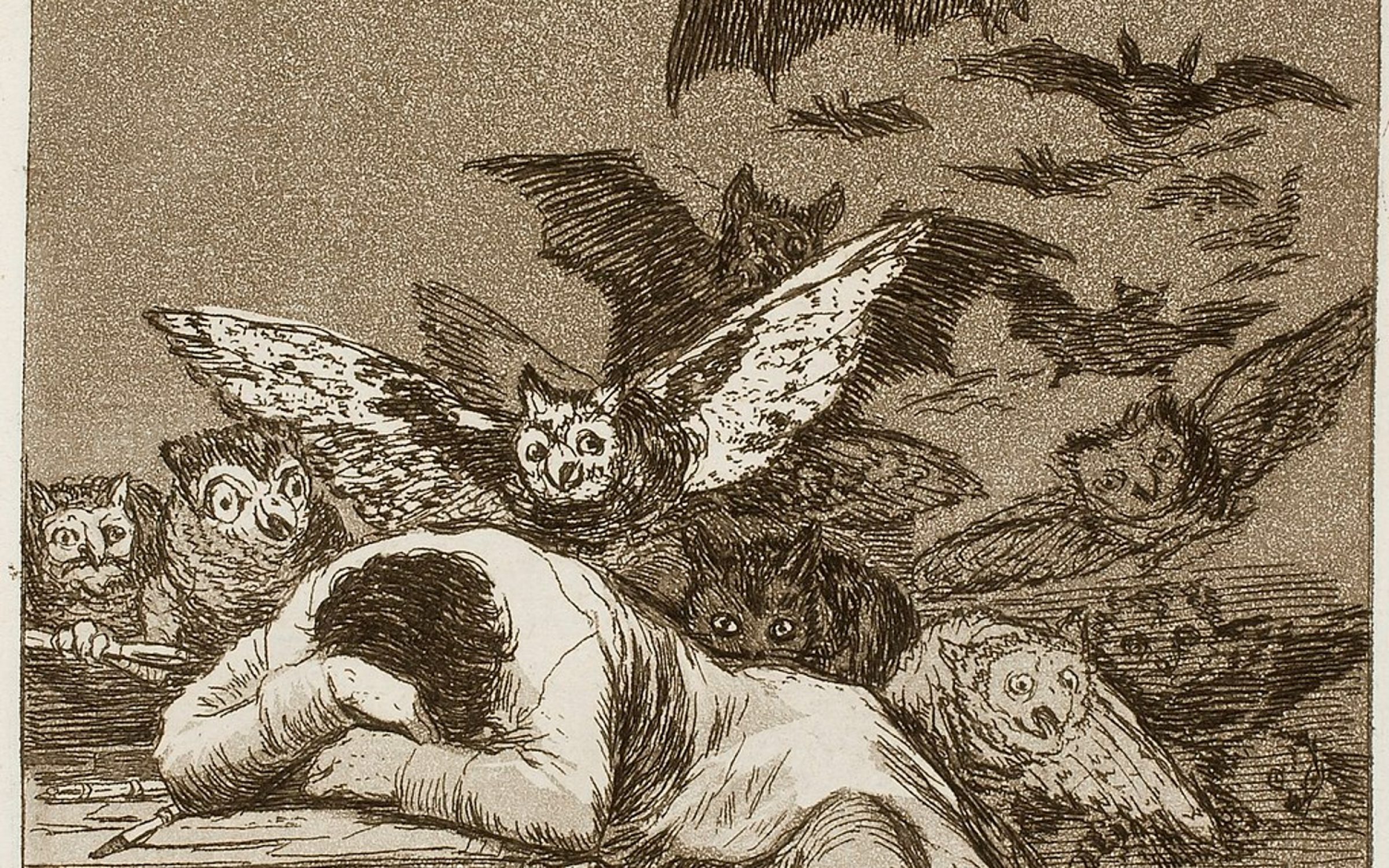Goya intended this powerful image to be the title plate of a series of ‘Dreams’ satirizing the society he lived in during a fraught period of Spain’s history. As he became more and more bound up in the growing catastrophe its function changed and it ended up as one of the much larger set of eighty Caprichos (Caprices) in which the ‘dreams’ have morphed unmistakably into nightmares, sometimes ironically humorous.
Goya was an artist with a huge range of concerns, primarily a portrait painter, at first reflecting the refinement of the prosperous classes of eighteenth-century Spain. He decorated churches with allegories in a very personal version of late Italian Baroque. He was also a sort of Spanish Hogarth, creating energetic scenes of everyday life among people of all classes, But the warm humanity that gives these and his portraits their authority became more and more engaged with the developing horrors of Napoleon’s invasion and the Peninsular War, not to mention the corrupt leadership of incompetent politicians and military chiefs.

For his biting satires of contemporary life, he relied on the intimacy of drawing in pen or chalk, translated into etching (the crisp outlines) and aquatint (the beautifully applied layers of tone). Goya’s description of his subject here is: ‘The Author dreaming. His only intention is to banish harmful common beliefs and to perpetuate with this work of caprichos the sound testimony of truth.’
It’s hard to decide whether the artist has shown himself asleep, as he claims, or crushed by despair as he is mobbed by the bats and owls of a hellish menagerie of monsters. Are these the incubi of the threatening world of modern life? Or are they the progeny of his own teeming brain? One of the owl-like creatures that press round him is offering him the drawing implements with which he will put his terrors down on paper.
But the ‘sleep’ (sueño) is not simply that of an artist who tired himself out by working too hard. Goya has in mind the disastrous plunge into irrationality that he sees enveloping Spain as its rulers, a royal family profoundly disabled by long-term inbreeding, become a laughing-stock. It is in his royal portraits that his deep-seated concern for the welfare of his country is married to his professionalism as a portraitist. He presents Charles IV and his heir the future king Ferdinand VII with their family as deformed dolls, the formality of their poses and grouping a silent reproach to their inadequacy as human beings.
At the end of his life Goya, ‘el Sordo’, the deaf man, became like his contemporary Beethoven an isolated, increasingly pessimistic genius who reiterated his long-held fears in a series of ‘black paintings’, to decorate the house he acquired for himself in the countryside outside Madrid: large canvases depicting eerie or visionary scenes – covens of witches, duels between dwarfish or disabled men, processions and ceremonies of the church portrayed as infernal gatherings. Although they date from a quarter of a century later than the Caprichos, they tell us with terrifying certainty that Goya never escaped from the grim dream that had overwhelmed him in the 1790s.
Write to us with your comments to be considered for publication at letters@reaction.life




